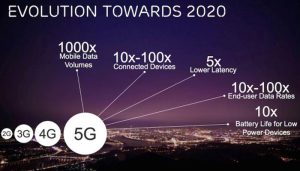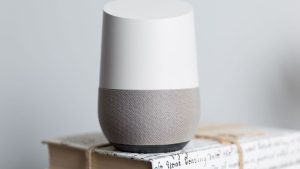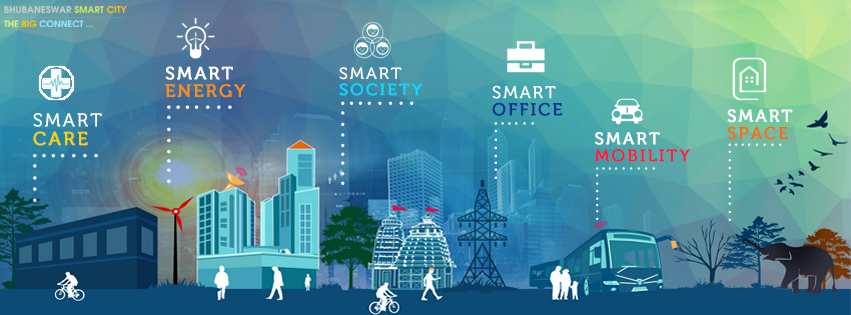
Tech Trends to Watch for in 2018
Whether you’re a tech professional or aficionado, one will always look towards new developments and the trends that lie ahead. Nothing is more exciting than being on the bleeding edge of what’s to come. What lies ahead for 2018? I’ll be looking carefully at the following…
5G Prep and Pilots
4G LTE has fully permeated the life of enterprise and consumer connectivity. Though the marketing of 4G has kept people feeling fresh, the reality is, LTE technology is an extension of cellular tech that has been around since 2008. LTE actually stands for Long Term Evolution. As the name implies, it is the long-term evolution of 3G technology delivering higher speeds and better performance. 4G, though, is not the next generation of cellular tech.
 5G, on the other hand, is a complete redesign of cellular infrastructure. Along with it’s better performance and higher speeds, 5G brings very scientific changes to how cellular technology would work. Millimeter wave technology, better battery-life, smaller footprint radios, device-to-device comms, and advanced MIMO are all things being standardized today.
5G, on the other hand, is a complete redesign of cellular infrastructure. Along with it’s better performance and higher speeds, 5G brings very scientific changes to how cellular technology would work. Millimeter wave technology, better battery-life, smaller footprint radios, device-to-device comms, and advanced MIMO are all things being standardized today.
Unlike LTE deployments, 5G will require new radios and software to be deployed on both the phone and carrier sides. This means that 5G will not be here overnight. Companies like T-Mobile and Verizon have announced pilots of 5G technology in earlier 2018, the actual penetration of 5G will extend into 2020. Once this technology is deployed and working, it will change everything we know about connectivity. Traditional Internet lines, how your devices connect and the types of things we’ll do with mobile will forever change when 5G becomes a reality. 2018 will be the test-bed of what’s to come.
Voice Assistants (Bots to AI to Voice Control)
 Last year everything was about chat-bots, AI and voice recognition. In 2018 these things have come together in a way that’s proven usability. True AI is many years away. We make strides each year in computer learning and advance software coding. That said, the reality of true AI is underwhelming. We’re no where close to having anything usable outside of some very specific pilots or demonstrations. Chat-bots, combined with a pseudo AI, has proven to be odd and clunky. While the stats show one thing, the reality of this technology another. Don’t by the hype, chat-bots are going the way of AIM. But, when this technology is paired with voice recognition, a star is born!
Last year everything was about chat-bots, AI and voice recognition. In 2018 these things have come together in a way that’s proven usability. True AI is many years away. We make strides each year in computer learning and advance software coding. That said, the reality of true AI is underwhelming. We’re no where close to having anything usable outside of some very specific pilots or demonstrations. Chat-bots, combined with a pseudo AI, has proven to be odd and clunky. While the stats show one thing, the reality of this technology another. Don’t by the hype, chat-bots are going the way of AIM. But, when this technology is paired with voice recognition, a star is born!
Digital Voice Assistants like Amazon Alexa, Google Assistant/Home, Microsoft Cortana and Apple’s Siri have proven to be resilient and adopted. 27 million Amazon and Google products were purchased during 2017’s holiday season. This means more data, better analytics and more functionality is coming. While true AI and the ability for these devices to “think” on their own is a ways out, in 2018 you’ll see the continued explosion of “skills” and “extensions” for these devices. You’ll also see the adaptation of these devices into apps that will run on your mobile phone and computer. 2018 will bring the unification of voice assistants. With this, a smarter and more natural way of interacting with technology, brands and search will come.
Robotics
 2018 will further robotics endeavors from companies that have long been pushing for consumer use of robotics at home. Additionally, commercial deployments of robotics will continue to grow in areas ranging from manufacturing to “front desk” clerks.
2018 will further robotics endeavors from companies that have long been pushing for consumer use of robotics at home. Additionally, commercial deployments of robotics will continue to grow in areas ranging from manufacturing to “front desk” clerks.
“Robots” such as Kuri, Aibo and Cloi are all examples of products that are shipping in 2018 and not just being demonstrated on-stage. Looking beyond 2018, the most impressive demonstration goes far beyond these toys, and gives a glimpse into the future of robotics. Meet Sofia. Sofia is a humanoid robot that is powered by Google’s AI technology. While not ready for prime-time, it is one of the most impressive realizations of robotics and technology the world has ever seen. 2018 will push the boundaries of what machine can say, do and accomplish independently.
Smart Cities (IoT Matured)
 IoT, or Internet of Things, has been on the tips of people’s tongues since 2015. Over the last few years it has fully penetrated into consumer homes in the form of Nest, Canary, Alexa, Hue, and August to name a few. People are fully outfitting their houses with “smart home” technology. It’s proven to be reliable, secure-ish, and gives more control over power consumption.
IoT, or Internet of Things, has been on the tips of people’s tongues since 2015. Over the last few years it has fully penetrated into consumer homes in the form of Nest, Canary, Alexa, Hue, and August to name a few. People are fully outfitting their houses with “smart home” technology. It’s proven to be reliable, secure-ish, and gives more control over power consumption.
In the commercial space, this technology is still tapping into building control systems. These controllers are far past their life-cycle and can’t offer a true “smart building” feel. In 2018, commercial property owners will be leapfrogged by municipalities and cities that yearn for a high-tech metropolis. Smart lighting, traffic control, communications and building control will be finding it’s way to libraries, city hall, streets and bus stops.
Sparked by the innovations at Tesla, cities will now offer the first steps in solar tech and reducing their power draw. LED lighting, 5G wireless and other technologies will give civil engineers new tools to interconnect and improve how people interact and communicate within a city’s limits. 2018 will further the advancement in infrastructure paving the way for improved highways, bridges, tunnels and building codes. Energy efficiency won’t be an option, it’ll be the norm. This interweaves with society, mobility, care and office. Once cities adopt IoT, property owners will be forces to replace systems that are decades old with newer, more connected, technologies.
Bonus Secret – You Won’t Find Anywhere Else
Appliance-afication of Tech
Since the 90’s, computers and phones have followed a trend of being the open-ended. They have had ports, expansion, and interoperability. Over the last few years there’s been a shift away from ports in favor of wireless technologies. There’s been a shift from interoperability to walled garden “app stores” or “play shops”. Technology is shifting from operator connected, to always connected.
In 2018, you’ll see a paradigm shift to something straight out of the 1980’s! Computers and technologies will be sold as appliances. A device with a shelf-life, limited interoperability, and single purposed. Look at the Google Home or Chromebooks. These devices have limited range with a far better experience. They are finding their way into people’s home and hearts in a way that computers and gadgets haven’t for many years. What I’m calling the appliance-afication of technology is a call back to a time when people purchased tech that worked fantastically for a limited range of uses.
- It searches the internet and can “talk” to my smarthome
- It allows me to work and watch YouTube
- It allows me to watch streaming content on my TV
While more feature enriched computers won’t go away, more people will be being technology appliances and devices that are designed for specific use cases and experiences. The paradigm shift is to selling experiences, not selling technology.
2018 promises that communication will, once again, revolutionize our lives in new and exciting ways. We will have the ability and the responsibility to build new bridges of acceptance and co-operation between consumer and enterprise electronics.


